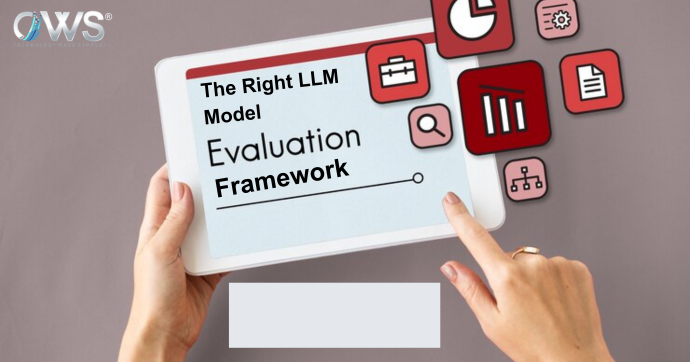The demand for secure, high-quality software is greater than ever. Companies are adopting devops practices to ensure seamless collaboration between development and operations teams, but security often becomes an afterthought. This is where DevSecOps comes into play. By integrating security into every stage of the DevOps development process, businesses can ensure that their software is functional, efficient, and secure.
This blog explores the concept of DevOps security, the role of DevSecOps, and how to effectively incorporate it into development pipelines.
What is DevOps Security?
DevOps is the practice of integrating security measures into the DevOps framework. It ensures that security isn’t just an isolated phase of the software development lifecycle but an integral part of every stage. This means addressing potential vulnerabilities early in the process and continuously throughout development, deployment, and maintenance.
With cyber threats on the rise, traditional methods of adding security at the end of the pipeline are no longer sufficient. DevOps shifts the focus to “secure by design,” minimizing risks and reducing the cost of addressing security issues later on.
The Role of DevSecOps
DevSecOps is the perfect blend of development, security, and operations. It introduces a mindset where security becomes a shared responsibility for all teams involved. Instead of treating security as a bottleneck, DevSecOps integrates it seamlessly into the workflow.
Here’s how DevSecOps enhances DevOps development:
- Early Risk Detection: Security vulnerabilities are identified and resolved early, saving time and effort.
- Automation for Efficiency: Automated tools help monitor, detect, and fix issues without slowing down development.
- Compliance Assurance: Ensures that the software meets industry standards and legal requirements from the start.
- Collaboration-Driven Security: Promotes teamwork between developers, security experts, and operations teams for better results.
Read More-: The Importance of DevOps Consulting in Modern Software Development
Why is DevSecOps Critical in Development Pipelines?
With cyber threats evolving every day, traditional approaches to security are no longer enough. In the world of DevOps development, where rapid iterations are the norm, security can often take a back seat. However, the consequences of ignoring security can be costly—ranging from data breaches to reputational damage.
Security breaches can result in financial losses, legal troubles, and reputational damage. Incorporating DevSecOps into the development pipeline addresses these concerns by:
- Building Trust: Customers and stakeholders feel confident when software is secure.
- Saving Costs: Fixing vulnerabilities post-launch is significantly more expensive than addressing them during development.
- Enhancing Agility: Teams can respond quickly to threats without disrupting the pipeline.
- Ensuring Longevity: Secure software is more resilient to cyberattacks, ensuring long-term reliability.
- Early Detection of Vulnerabilities: Spotting security issues during the development phase prevents expensive fixes later.
- Reduced Risk of Cyber Attacks: Continuous security practices make it harder for attackers to exploit loopholes.
- Compliance with Regulations: Automated security checks help meet industry standards and regulations.
- Improved Collaboration: Bringing security experts into the DevOps process fosters better communication and teamwork.
Steps to Incorporate DevSecOps into Your Development Pipeline
1. Adopt a Security-First Mindset
The first step is to make security a priority for everyone involved. Educate your team about the importance of secure coding practices, and encourage collaboration between development, operations, and security teams.
2. Automate Security Testing
Automation is key to efficient DevSecOps implementation. Use tools to perform tasks like static application security testing (SAST), dynamic application security testing (DAST), and vulnerability scanning. Automated testing ensures consistent results without manual intervention.
3. Integrate Security into CI/CD Pipelines
Incorporate security checks at every stage of your continuous integration and continuous deployment (CI/CD) pipeline. From code commits to deployment, ensure that each phase includes security validations.
4. Monitor and Respond to Threats in Real-Time
Implement tools that provide real-time threat detection and alerting. Continuous monitoring allows teams to address issues immediately, reducing the potential impact of breaches.
5. Foster a Culture of Continuous Improvement
Security isn’t a one-time task—it’s an ongoing process. Regularly review and update your security practices to address new challenges and threats.
See Also-: Enhancing IT Efficiency with DevOps Tools and Techniques
Tools and Techniques for Effective DevSecOps
- Version Control Systems: Tools like Git ensure secure and trackable changes to code.
- Static Code Analysis Tools: Identify vulnerabilities early in the development stage.
- Dynamic Testing Tools: Simulate real-world attacks to test software robustness.
- Container Security Tools: Secure containerized applications to prevent breaches.
Best Practices for DevOps Security
To successfully implement DevOps security, follow these best practices:
- Shift Left: Incorporate security testing earlier in the pipeline rather than waiting until deployment.
- Use Multi-Factor Authentication: Secure your CI/CD environments with multi-factor authentication.
- Keep Dependencies Updated: Outdated dependencies are a common entry point for attackers. Regularly update and patch software libraries.
- Train Your Team: Provide regular training on the latest security trends and techniques.
Benefits of Incorporating DevSecOps
Adopting DevSecOps can transform your software development process. Key benefits include:
- Reduced Security Incidents: By addressing vulnerabilities early, you significantly lower the chances of breaches.
- Faster Time-to-Market: Automation and integrated workflows reduce delays.
- Improved Team Collaboration: Breaking down silos leads to better communication and results.
- Enhanced Customer Satisfaction: Secure and reliable software builds trust with end users.
Common Challenges in Adopting DevSecOps
While DevSecOps is beneficial, it’s not without its challenges.
1. Resistance to Change: Shifting to a DevSecOps model requires cultural changes that some teams may resist. Overcoming this resistance involves clear communication about the benefits and gradual implementation.
2. Lack of Expertise: Not all teams have the necessary security expertise.
3. Balancing Speed and Security: Teams often fear that security measures will slow down development. However, with proper automation and integration, security can enhance speed rather than hinder it.
The Future of DevSecOps in DevOps
As technology evolves, the need for secure and efficient software delivery will only grow. Organizations adopting DevSecOps practices today are better equipped to handle tomorrow’s challenges, ensuring both speed and security in their DevOps pipelines. Adopt a proactive approach, invest in the right tools, and foster a culture where security is a shared responsibility. This not only improves the security of your software but also enhances efficiency and builds trust with your stakeholders. Start integrating DevOps practices today and ensure that your software is ready to face the challenges of tomorrow!
Conclusion
DevSecOps Incorporating into the software development pipeline is no longer a choice —it’s a necessity for the threat landscape. By embedding security into every stage of DevOps Software development, you can create resilient, high-quality software that stands the test of time.
Must Know-: How To Maintain Brand Quality in Outsourced E-Commerce Development
Tags:-








